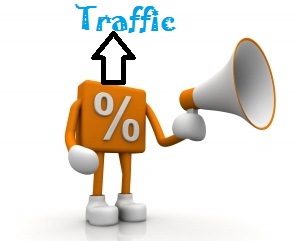If you’re a small business site owner whose just starting to build your online presence, it’s easy to get confused about what kind of optimization strategy is your best route to page one rankings. There are literally thousands of posts, pages and services that all claim to offer the SEO recipe for doing #1 ranking and really, it’s perfectly natural to feel overloaded and confused.
That’s why we’ve put together this little guide to get you started off with a series of absolutely key sequential steps that will have you well on your way to ranking for top spot in Google searches for your business niche without too much fuss over all the different options and “tricks” of optimizing for top rank. Consistently follow these steps and you’re nearly guaranteed to eventually reach a tops search rank for select keywords in your niche.
- An SSL Certificate Can Help In SEO Rankings
- Best WordPress Plugin for SEO and Tips to Use Those Properly
1. Create a Site that’s made with Clean Code
Programming code has its own special impact on SEO and by creating a site that consists of clean, easily readable and easily machine searchable code is one of your first steps towards having a great optimization profile. A neatly coded site should use the latest in web standards, be coded cleanly and in an organized fashion, and be made as much as possible from programming languages that are search engine readable. This means avoiding over use of Java or, worst of all, Flash.
One of the best ways to ensure that all of the above are fully met, especially if you’re not a programming expert, is to simply build your website off a content management system (CMS) platform that’s been downloaded and installed to your hosting providers servers. WordPress, which is free to download from the WordPress.org site or through your hosting’s Cpanel, is probably the best CMS out there and by using it you are automatically integrating your web presence with the latest in code standards and in the process creating a site that’s highly functional, easy to modify and highly SEO friendly in terms of its programming.
2. Research Keywords
While you don’t want to saturate your website with too many keywords because it will possibly trigger an SEO spam alert in Google’s latest algorithms, you do still need to research, learn and incorporate these valuable niche specific words and phrases that the readers in your target audience are likely to use for their content searches; the trick is to incorporate them in a way that flows naturally with any text on your pages and won’t look like keyword stuffing.
Use online keyword research tools like the Google Adwords keyword suggestion tool or the much more comprehensive paid services available from Wordtracker.com to find the most popular specific searches for word combinations and phrases in your niche, including what are called long tail keywords (words that are less commonly searched for but also less competitively used among other sites like yours).
After you’ve created a solid list of words and phrases, you’ll use them throughout your site’s content and on-page text optimization in HTML (more on this in a bit).
3. Structure Your Site for SEO Friendliness
We’ve already talked about using clean modern code in your site design and which kind of programming platforms to avoid, but there is also a lot of optimization based importance to how you assemble your site pages.
For one thing, you want to make sure that all non-text features on your site like videos, photos and even Flash features are tagged off by HTML attributes and tags that briefly describe them using the right keywords per each feature. This way, these features will also be located and indexed by search bots as they crawl your site.
Another thing that’s vital in structuring your website is making sure all its pages are linked together in an organized way that easily brings readers from one page to all of your other content pages. This is especially important since search engine crawlers explore a new site by navigating through its pages in a way that’s similar to how humans would do it, and if human readers can’t find your valuable indexable pages, neither will the search engine spiders.
Finally, make sure you give SEO friendly URL’s to all your sites pages and any new pages as you add them; for example, if a page on your site is about travelling to Costa Rica, instead of having a page with the URLwww. example .com/content/8495685.php, go for a descriptive URL like www.example.com/travelling-to -costa-rica-budget. This is a lot more descriptive and that kind of descriptiveness, along with using a keyword or two is what all your content URLs should have in them.
4. Offer Great Content
Nothing and we mean nothing, beats out valuable, useful content in terms of SEO value. The single biggest part of your whole long term campaign as a small business engaged in DIY SEO will be to offer consistently good content on your site. We’re talking about the kind of material that informs, gives useful tips, is fresh, unique and is easy on human readers’ eyes.
Never stop producing high quality content for your site for as long as you want to keep optimizing its rank. Relevant, fresh information is something that both search engines and readers love, so the more of it the better.
A good way to easily keep incorporating content on your site is by creating a blog segment that you use to create regular new posts on the latest in your niche.
5. Build Powerful Organic Backlinks
Backlinks to your site’s pages from other authoritative sites with relevance to your own are extremely important in Google’s algorithmic assessment of how high quality your own pages are. Because of this, work on building those organic backlinks by getting yourself known and recognized in your business field.
You can do this by offering to guest post on popular niche specific blogs in your business area, by offering valuable content or business services that others want to share on their own pages and by using social networking to promote yourself organically, create a base of happy fans and watch them share your website to their friends and contacts who might also find it useful.
None of these things should be hard to do if your website is offering real value to its visitors and you’re getting the word out about this value.
Bonus. Try a Totally Strategic Local Keyword and Content Strategy for Faster SEO Ranking
If all else doesn’t pan out like you’d hoped, there is another great way of creating a site whose content soon hits page one of Google: If your niche is too competitive from an international point of view, just localize your site by making your entire angle on that niche specific to a certain geographic region. This is especially useful if you’re a small business who’s looking to capture new clients. By making your use of keywords and content both relevant to your general location, you’ll be attracting far more high search results positioning from searches by people in your area. Google in particular loves to create this kind of traffic as part of their focus on personalizing search.



